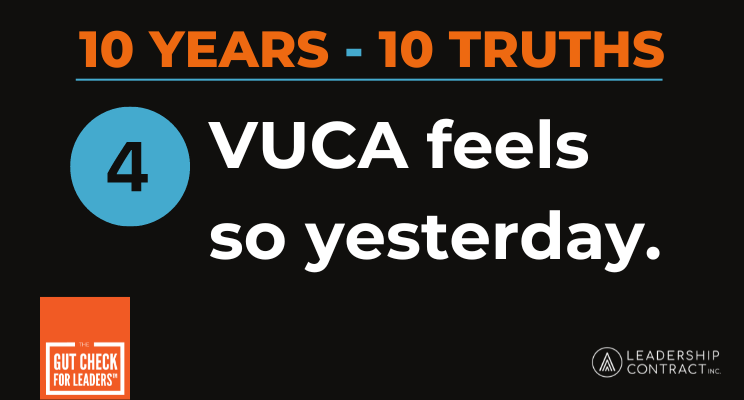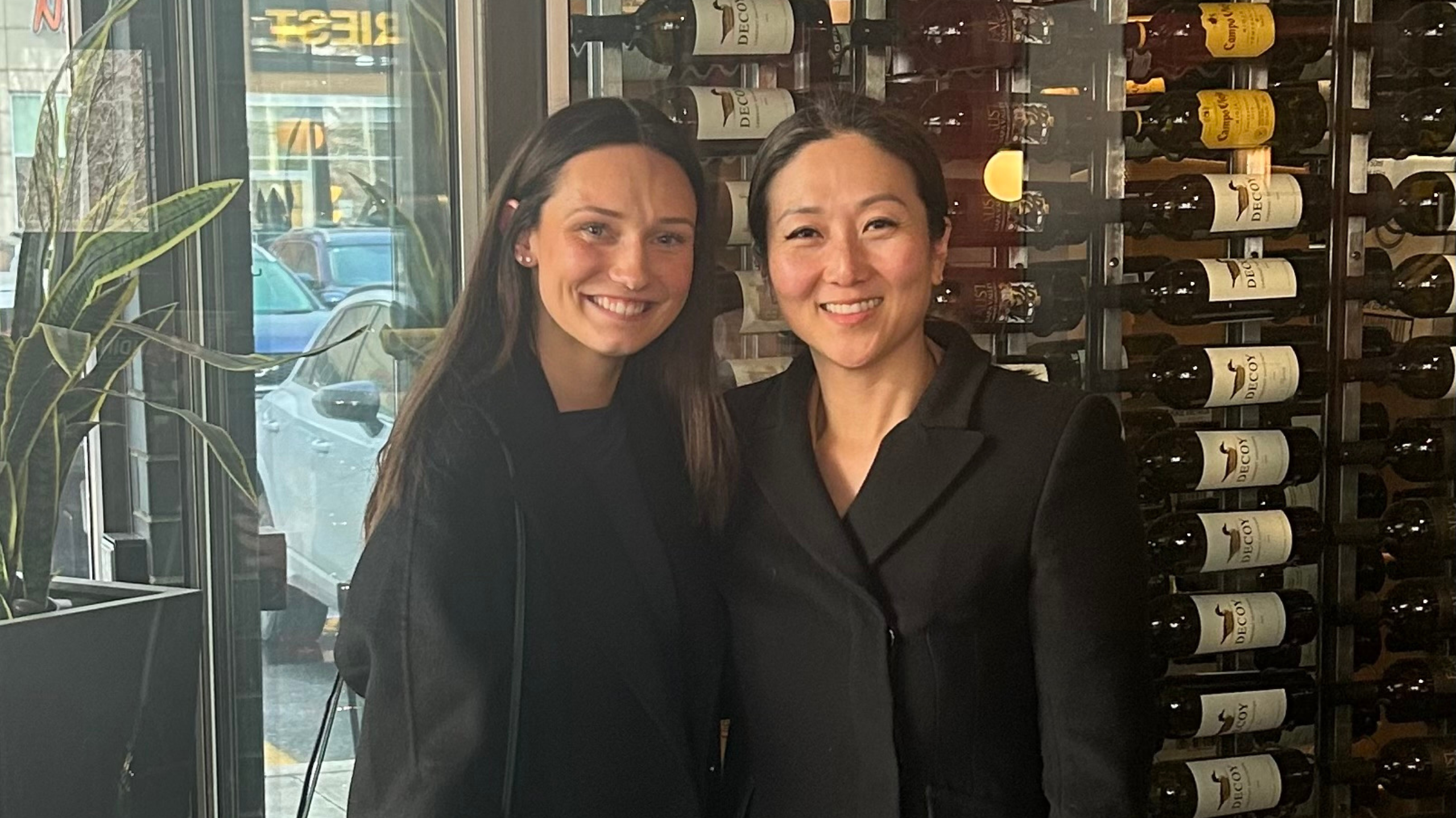4: VUCA feels so yesterday.
In the fourth installment of my 10 Years – 10 Truths series, I reflect on VUCA and the evolution I’ve seen in its use over the last decade. Is it still a useful framework to discuss the context in which leaders lead?
If you are interested in learning more about our new leadership accountability research, then join our next webinar here.
The acronym VUCA has been around for a long time. It stands for Volatility, Uncertainty, Complexity, and Ambiguity. It’s a concept that originated in the U.S. military to describe the more chaotic world following the end of the Cold War. The business world then adopted it to describe the challenging and unpredictable nature of leading in a global business environment.
Over the last ten years, it’s come up a lot in our work with organizations worldwide.
However, in a recent conversation, a compelling idea emerged. My team and I led a discussion with some senior executives going through transformation change. One raised the term VUCA, and another quickly replied, “VUCA is so yesterday!”
That caught my attention, and I asked the individual to explain her thoughts. She began to describe the complexity of the industry and business context. A lot was going on. These leaders were feeling overwhelmed, overloaded, and overworked.
I then shared a more recent framework, one created by Jamais Cascio, a futurist and Distinguished Fellow at the Institute for the Future. He coined the acronym BANI to describe a world that is Brittle, Anxious, Nonlinear, and Incomprehensible, reflecting the emerging complexities and uncertainties of modern times. Cascio’s BANI framework is considered an alternative or supplement to the VUCA framework, offering a different perspective on the challenges faced in today’s rapidly changing environment.
These ideas resonated with the senior executives, and they seemed to better describe the challenges they faced. What they were describing wasn’t unique to them. It’s a common conversation I have with C-Suite leaders.
It’s also confirmed by our recent research. C-Suite leaders were asked to identify the top strategic challenges they are contending with, and the table below shows the results.

As you can see, the top three strategic challenges are changing customer expectations, transforming the business model, typically driven by digital technologies, and managing CEO transitions.
We also found that most executives aren’t just dealing with one strategic challenge. They deal with many of them all at once – on average, 3.15 strategic challenges by respondents. These leaders are facing a confluence of strategic challenges all at once.
In a recent conversation with a senior executive in the communications industry, she shared, “It’s feeling like we are having an existential crisis as a company. We’ve not seen the degree of change before in our industry. We have a massive agenda ahead, and there are a lot of unknowns to manage. The ambiguity puts much pressure and strain on us, from the Board to our teams.”
Her comments accurately describe the context that many leaders are dealing with today. A World Economic Forum article earlier this year labeled it a state of “polycrisis”, where current and emerging challenges are interconnected and creating a compounding effect that challenges us to deal with them effectively.
What are your thoughts? Can you resonate with these ideas? Is VUCA outdated? Weigh in with your reflections and reactions.
More Leadership Resources
We have many resources to help you scale leadership accountability across your organization.
Signup for our monthly newsletter with the latest Gut Check for Leaders, Lead the Future Podcast, and other important leadership accountability news.





